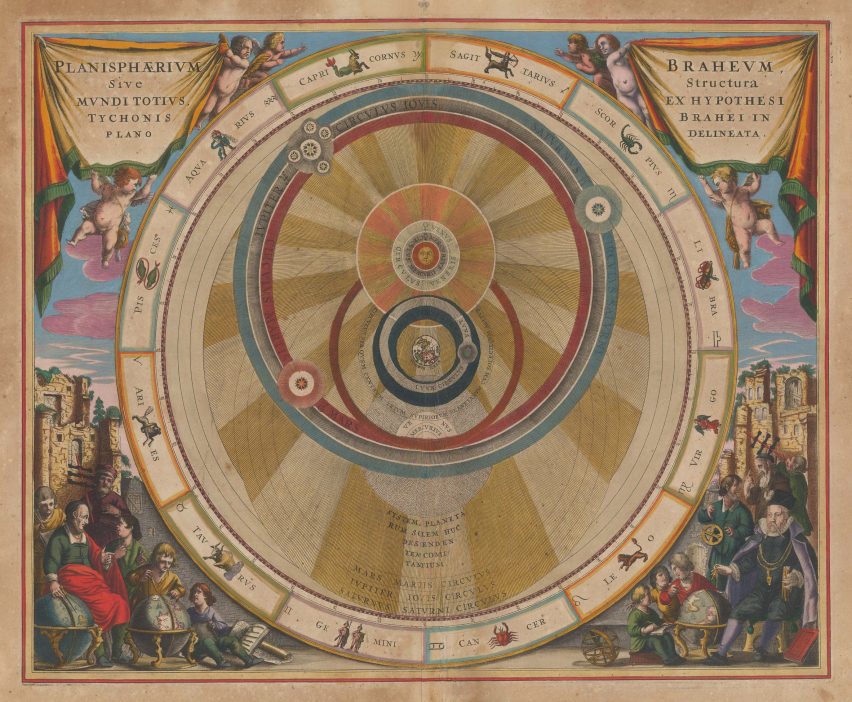
The Mapping of the Moon exhibition celebrates 300 years of lunar cartography
The Map House has created an exhibition of lunar maps created in the 300 years leading up to the first moon landing, which took place 50 years ago today.
The Mapping of the Moon: 1669-1969 contains around 80 celestial maps from the 17th century, alongside 20 moon globes and scientific instruments.

London antique-map gallery and seller The Map House has put on the exhibition, which is open until 21 August, to celebrate the 5oth anniversary of the first moon landing in 1969.
The Map House put on the exhibition to demonstrate the scientific endeavour that took place over 300 years to allow the Apollo 11 moon landing mission to take place.
"In order to reach a destination, you generally need a map," Mary Beal, gallery manager at The Map House told Dezeen. "This also stands for anyone embarking on the adventure into space."

Some of the most interesting maps in the collection were created in the 1960s as part of the effort to land a man on the moon.
"I think one of the most striking maps in the collection is the phenomenal USAF Lunar Wall Mosaic by the United States Air Force Aeronautical Chart and Informational Service (ACIC)", said Beal.

"The NGA (now the Defense Mapping Agency) reported that 281 of the best lunar photographs and over 1,200 telescope observations were carefully mosaic-ed together to create an accurate picture of the moon, from which they were able to measure distances, plan a successful route and choose landing sites," she continued.
"An ambitious project with a phenomenal outcome, this map was instrumental in the success of NASA's Apollo program and landing men on the moon."

Alongside these 20th century creations are numerous maps drawn as humans began to visually observe the moon.
"Astronomy is one of humankind's oldest sciences," explained Beal. "For millennia, we have looked up at the night sky in awe, drawn it and tried to make sense of our place in the Universe. It is only with the arrival of the telescope that scientists and astronomers are finally able to see the fine details of the heavenly bodies."

The earliest maps on display date from the 17th century and are much more decorative than later maps.
These lunar drawings were created as humans were learning more about the world and the universe, and over time the detail and accuracy of the mapping improved.

"Over time, as our understanding of the universe developed and the technology we used to measure and observe also developed – we have been able to get a clearer picture of the Earth’s moon and the solar system in which we have lived," said Beal.
"A major early milestone was Cassini's moon map, first published in 1679 by Jean-Dominique Cassini I and from drawings by Claude Mellan. This is considered one of the earliest, most scientific maps of the moon."

Alongside the maps on display are a selection of signed memorabilia by astronauts Neil Armstrong, Buzz Aldrin and Jim Lovell.
The first moon landing took place 50 years ago on 20 July 1969. To mark the occasion, Benedict Redgrove has photographed a selection of NASA artefacts that have been used over the past five decades of space travel.
A number of brands and designers have also created moon-related products to coincide with the anniversary, including artist Matthew Day Jackson, who has developed a Formica surface that subtly replicates the lunar surface, and Italian brand Driade, which reinterpreted some of its classic chairs for use on the moon.